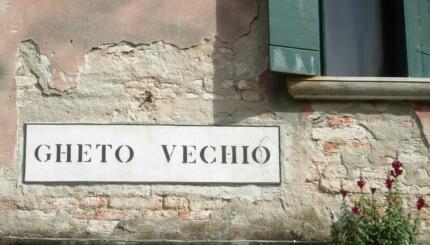Some 2,000 years ago, 967 Jewish men, women and children took their own lives rather than suffer enslavement, torture, or death at the hands of the Roman army. This dramatic event took place atop Masada, a barren and wind-swept mountain overlooking the Dead Sea that is today among the most-visited archaeological sites in Israel and was, for a time, a symbol of the state itself. According to the lone account by the Jewish historian Flavius Josephus, the group’s leader, Eleazar Ben-Yair, convinced the besieged Jews to deprive the Romans of victory and spare themselves horrible suffering by taking their own lives.
The fall of Masada marked the end of a turbulent period in Jewish history that also witnessed the annexation by Rome of Judea and the destruction of the Second Temple in 70 CE. Rome’s annexation set the stage for the rise to power of Herod, who was appointed the client king of Judea in 40 BCE. Herod was a cruel and ruthless ruler who ironically is best-known for an atrocity that he probably did not commit: the Massacre of the Innocents. At the same time, Herod’s extensive building projects — including the Second Temple in Jerusalem, the port of Caesarea Maritima and his establishment of a network of fortified desert palaces — left a lasting imprint on the landscape. The fortress of Masada was one of those desert palaces and featured the most up-to-date Roman amenities: bath houses, lavish interior decorations like mosaic floors and Pompei-style wall paintings, and pools and cisterns supplied by a sophisticated aqueduct system.
Conditions in Judea deteriorated after Herod’s death, culminating with the outbreak of the First Jewish Revolt against Rome (66-70 CE). The revolt was suppressed by the Roman emperor Vespasian and his son Titus, who took Jerusalem and destroyed the Second Temple. Vespasian and his family celebrated their victory with a parade, a triumphal arch (the Arch of Titus in Rome) and a special series of coins. The Judean war became the centerpiece of Flavian propaganda, legitimizing the newly established dynasty.
After the destruction of the Temple, the Jewish rebels who had occupied Masada during the revolt were joined by refugees from other parts of the country, who lived jam-packed in the rooms of Herod’s fortification wall and in other buildings. In 72 or 73 CE, approximately 8,000 Roman soldiers arrived at the foot of Masada, the last fortress still in Jewish hands. The soldiers laid siege to Masada for several months, building a circumvallation wall completely encircling the base of the mountain, eight camps to house the soldiers and an assault ramp — all of which remain visible today.
With your help, My Jewish Learning can provide endless opportunities for learning, connection and discovery.
In the 1930s, archaeologist Shmaryahu Gutman organized treks for youth movements that helped establish the site as an emblem of Zionist aspirations. After Israel’s establishment in 1948, Masada became a metaphor for the state itself, expressed by the popular slogan “Masada shall not fall again,” a phrase coined in 1927 by the poet Yitzhak Lamdan. Israelis saw themselves much as the inhabitants of Masada once did — isolated, besieged, and surrounded by enemies on all sides. The notion that heroic Jewish freedom fighters held out against the mighty Roman Empire to the bitter end also served to counter the image of millions of passive European Jews starved to death or gassed in Nazi concentration camps.
Masada’s elevation as a national symbol also owes much to the excavations conducted there between 1963 and 1965 by the renowned archaeologist Yigael Yadin, a former chief of staff of the Israel Defense Forces. Yadin’s excavations brought to light physical remains associated with the families who had sheltered there which, thanks to the arid climate, were better preserved at Masada than at nearly any other archaeological site in the country.
In recent years, some scholars have questioned the veracity of the popular Masada narrative, with some suggesting that Josephus fabricated the sensational account of mass suicide. Archaeology cannot resolve this debate because the remains can be interpreted in different ways. The question of whether the mass suicide actually occurred depends entirely on how one evaluates Josephus’s reliability as an historian.
After Yadin’s excavations, the archaeological remains underwent restoration and Masada became a national park. In a remarkable conflation of archaeology and nationalism, Masada’s image was elevated through its association with Yadin, who subtitled his 1966 book on the subject: “Herod’s Fortress and the Zealots’ Last Stand.” But within a few years, Masada’s symbolic power began to wane, even as it remained a highly popular destination. In 2001, it became Israel’s first UNESCO World Heritage site. It remains an especially popular destination for tourists who ascend the mountain each day by way of the winding snake path, cable car, or the Roman assault ramp.
Although Masada has lost much of its relevance to contemporary Israelis as a national symbol, it still resonates with Diaspora Jews who make the pilgrimage to the top of the mountain, where guides relate the story of a small band of freedom fighters who made a heroic last stand against Rome.



